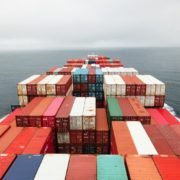Exports grow by 21% in December 2019
Makati – Department of Trade and Industry (DTI) Secretary Ramon Lopez said that Philippine exports reached a record-high of US$70.3 billion in 2019 from US$69.3 last year despite external headwinds from the global trade policy uncertainties, geopolitical tensions, and country-specific challenges.
“The relatively strong export performance of the Philippines transpired amid DTI’s strong efforts in attracting investments, spurring MSME development, and promoting the ease of doing business,” said Sec. Lopez.
Growing at 1.5% year-to-date (ytd), the country’s export growth is also the second-best performer among East Asian economies, next to Vietnam. The Philippines, China, and Vietnam were the only three countries that reported positive export performance among 11 trade-oriented Asian economies last year.
“Our goal was to expand the productive capacity and export base as well as in actively enhancing trade relations with existing partner economies, by marketing products abroad and exploring new export markets,” the trade chief said.
For the first time, electronics exports hit US$ 40 billion with a 4.4% growth ytd. The sector comprised of 56.9% of total exports, with non-electronic products making up the remaining 43.1% at US$30.3 billion. For non-electronic products, top growers are: mineral products; fruits and vegetables; and travel goods and handbags.
The top four destinations for Philippine merchandise items last year were the US, Japan, China, and Hong Kong. Secretary Lopez said that curbing inflation via aggressive price monitoring activities has also contributed in making locally-made products attractive internationally.
In December 2019, the Philippines was also the top performer with a 21.4% year-on-year (yoy) growth, the fastest pace in 2019. This was largely on the back of a 24.9% yoy jump in electronic exports, which accounted for 60% of merchandise exports in December. Other top export items for the month that also recorded growth include bananas, chemicals, copper metal, machinery and transport equipment, among others.
Meanwhile, Philippines’ merchandise imports decreased 4.8% to US$107.4 billion in 2019. As the full-year’s export growth was positive and import growth negative, the country’s merchandise trade deficit narrowed 14.9% to US$37.0 billion.
According to Secretary Lopez, this bodes well for the country’s external position since a smaller trade deficit would lead also to a narrowing of PH’s current account deficit.
—
Stay updated with news and information from the Department of Trade and Industry by visiting their website at dti.gov.ph.





